10 Best Apple Chipsets Used in iPhones
Apple is known for its exclusivity. The company designs, develops, and markets its products independently. This means that Apple creates devices like the iPhone, iPad, and iPod with its own concepts, including the chipset.
This is different from most Android phone manufacturers, which rely on chipset makers like MediaTek and Qualcomm.
Apple, on the other hand, plays multiple roles—it acts as both a chipset developer, like Qualcomm and MediaTek, and a phone manufacturer, like Xiaomi, OPPO, and Vivo, which do not develop their own chipsets. Additionally, Apple creates its own operating system, iOS, making its products truly exclusive.
Even though Apple designs its own chipsets, it still licenses the core technology from ARM. However, Apple has the freedom to customize ARM’s chipset design to meet its specific needs.
Apple does not manufacture its own chips either. Instead, it partners with semiconductor companies like TSMC and Samsung to produce them. Beyond chipsets or system-on-chip (SoC) designs, Apple also develops what is known as a system-in-package (SiP).
For now, let’s focus on Apple’s chipsets. Here are the 10 best Apple chipsets available today.
1. Apple A18 Pro

Powering the iPhone 16 Pro and iPhone 16 Pro Max, the Apple A18 Pro is the heart of these flagship devices. It succeeds the A17 Pro, which was used in the iPhone 15 Pro and iPhone 15 Pro Max, bringing notable upgrades in performance and efficiency.
With a faster CPU, improved GPU, and a more powerful Neural Engine, the A18 Pro delivers smoother gaming, better AI processing, and overall enhanced performance.
These improvements are made possible by TSMC's second-generation 3nm fabrication process, which allows for a higher transistor density. As a result, the chipset offers both better speed and energy efficiency.
Apple claims the A18 Pro delivers up to 15% faster CPU performance and up to 20% faster GPU performance compared to its predecessor. Despite the increased power, it is also more energy-efficient, helping extend battery life without sacrificing performance.
The A18 Pro features a 6-core CPU with 2 high-performance cores and 4 power-efficient cores. The 6-core GPU has also been redesigned with a more efficient architecture, allowing games to run smoothly at maximum graphics settings.
Beyond the CPU and GPU, the A18 Pro’s 16-core Neural Engine is capable of processing 35 trillion operations per second, significantly boosting AI-related tasks.
In benchmark tests, the A18 Pro achieved impressive scores, reaching up to 1.7 million points on AnTuTu v10 and around 3,200 points (single-core) and 7,800 points (multi-core) on Geekbench v6.
2. Apple A18
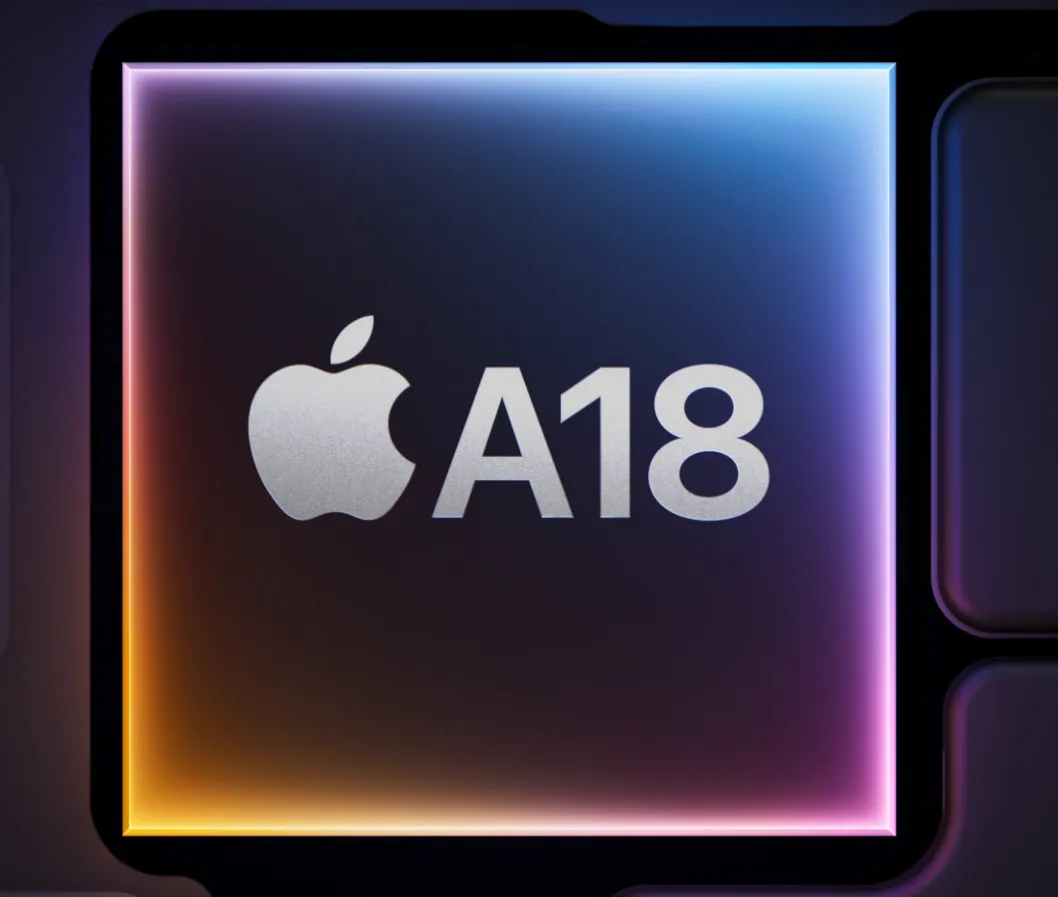
The Apple A18 powers the iPhone 16 and iPhone 16 Plus, which launched in September 2024. This chipset brings a significant boost in performance and efficiency compared to the A16 Bionic from previous generations.
Apple claims the A18 offers up to 30% faster CPU performance while consuming 30% less power than the A16 Bionic. This leads to better battery life for the iPhone 16 series.
Like the A18 Pro, the A18 is built on TSMC’s 3nm process. While not as powerful as the Pro variant, it still handles demanding applications and games with ease.
Both the A18 and A18 Pro share a similar CPU structure, but the key difference is in the GPU. The A18 Pro features a 6-core GPU, while the A18 has a 5-core GPU.
Additionally, some premium features found in the A18 Pro, such as ProMotion (adaptive 120Hz refresh rate), Always-On display, and ProRes video recording, are not available on the A18.
In benchmark tests, the A18 scored around 1.5 million points on AnTuTu v10, while Geekbench v6 recorded approximately 3,000 points for single-core and 7,000 points for multi-core performance.
3. Apple A17 Pro
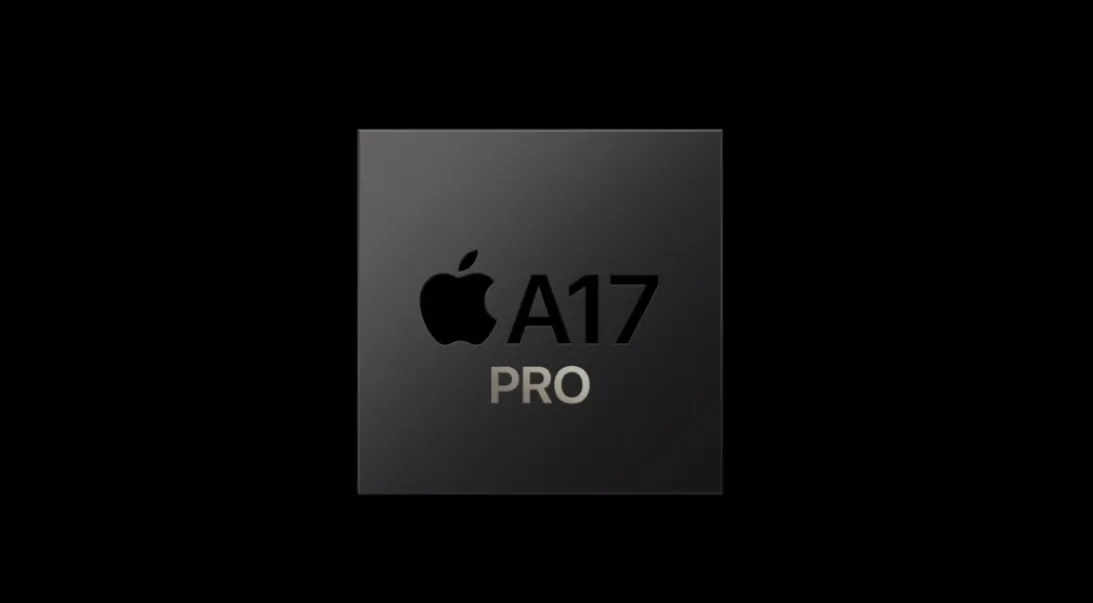
Apple introduced the A17 Pro alongside the iPhone 15 Pro and iPhone 15 Pro Max. Unlike previous Apple chipsets, this one drops the "Bionic" branding and replaces it with "Pro."
The A17 Pro is the world’s first SoC built on a 3nm process, with production handled by TSMC (Taiwan Semiconductor Manufacturing Company). Apple heavily promotes this chipset’s gaming performance and highlights its advanced graphics capabilities.
According to Apple, the A17 Pro’s GPU is 20% more efficient than the A16 Bionic, and its ray tracing performance has improved four times thanks to dedicated ray tracing hardware. Meanwhile, CPU performance has doubled compared to its predecessor.
The chipset consists of six CPU cores and six GPU cores. The CPU includes two high-performance cores running at 3.78 GHz and four efficiency cores clocked at 2.11 GHz.
Benchmark tests from GSM Arena show that the A17 Pro scored 2,926 in Geekbench 6’s single-core test and 7,237 in the multi-core test. On AnTuTu v10, it achieved an impressive 1,566,329 points.
4. Apple A16 Bionic
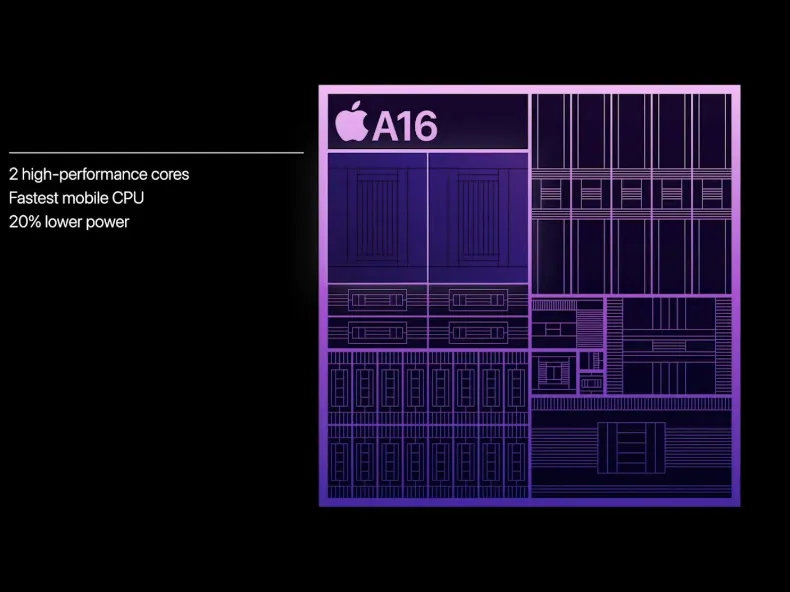
Unlike earlier chipsets that powered an entire iPhone lineup, the Apple A16 Bionic was exclusive to the iPhone 14 Pro and iPhone 14 Pro Max. The standard iPhone 14 and iPhone 14 Plus continued using the A15 Bionic, the same chip found in the iPhone 13 series.
The A16 Bionic is built on TSMC’s third-generation 5nm process, offering better performance, higher transistor density, and improved power efficiency compared to earlier 5nm chips.
This chipset features a 6-core CPU with two high-performance cores, known as Everest, running at 3.46 GHz, and four power-efficient cores, called Sawtooth, clocked at 2.02 GHz.
For graphics, the A16 Bionic comes with a 5-core GPU, which Apple claims provides 50% more memory bandwidth than the GPU in the A15 Bionic. It also supports LPDDR5 RAM and includes a 16-core Neural Engine that runs 7% faster than before.
The Neural Engine can handle 17 trillion operations per second (TOPs), outperforming the 15.8 TOPs achieved by the A15 Bionic.
Another notable addition is the Display Engine, making the A16 Bionic the first Apple chip to support this feature. Thanks to this, the iPhone 14 Pro series introduced an Always-On Display (AOD) with improved efficiency and the ability to dynamically adjust the refresh rate down to 1 Hz.
The Image Signal Processor (ISP) also saw improvements, enhancing computational photography. The A16 Bionic can process higher-resolution image sensors and handle up to 4 trillion operations per photo.
According to NanoReview, the A16 Bionic scored 963,149 points on AnTuTu v9. In Geekbench 5, it achieved 1,897 points in the single-core test and 5,407 points in the multi-core test. While this chipset outperforms Snapdragon 8+ Gen 1 and Snapdragon 8 Gen 2, rumors suggest it is slightly behind Dimensity 9200 in raw power.
5. Apple A15 Bionic
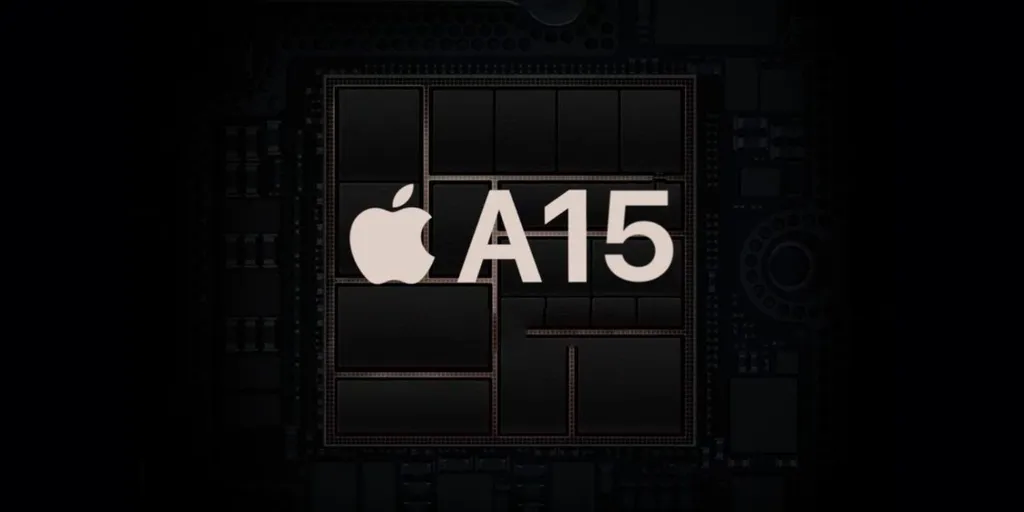
The Apple A15 Bionic is a powerful chipset with 15 billion transistors, significantly more than the A14 Bionic, which has around 11 billion. With more transistors, this chipset not only offers faster performance but also introduces improved graphics processing technology.
Like its predecessor, the A15 Bionic features a 6-core CPU with two high-performance cores and four efficiency cores. Despite having the same core structure as the A14 Bionic, its performance is noticeably better.
According to Geekbench, the A15 Bionic scores 1,746 in the single-core test and 4,772 in the multi-core test. Meanwhile, in AnTuTu, it reaches around 800,000 points.
The A15 Bionic powers the iPhone 13 series, delivering better speed and efficiency than previous generations.
6. Apple A14 Bionic
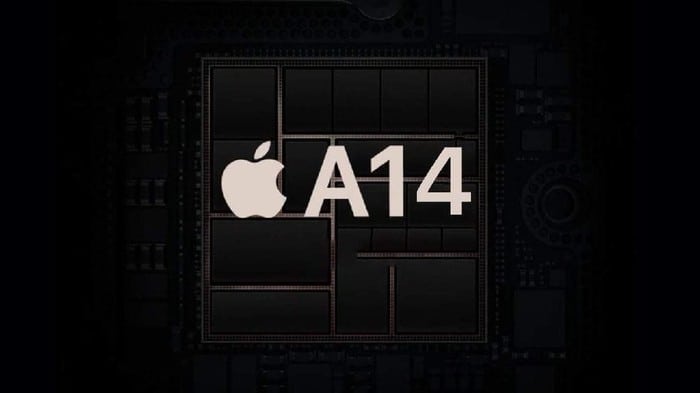
Continuing the "Bionic" branding, the Apple A14 Bionic introduces advanced technology. Built on 5nm fabrication, it is smaller and more efficient than the 7nm process used in the A13 Bionic.
Manufactured by TSMC, this chipset features a 16-core Neural Engine, designed for AI-related tasks. Its machine learning (ML) capabilities also see an 80% improvement over the previous generation.
Apple claims the A14 Bionic delivers 40% faster CPU performance and 30% better GPU performance than the A12 Bionic. Additionally, it includes a matrix accelerator and improved machine learning technology, enabling twice the speed and 10 times better performance in AI tasks.
The A14 Bionic first appeared in the 2020 iPad Air and later powered the iPhone 12 series, including the iPhone 12, iPhone 12 Mini, iPhone 12 Pro, and iPhone 12 Pro Max.
7. Apple A13 Bionic
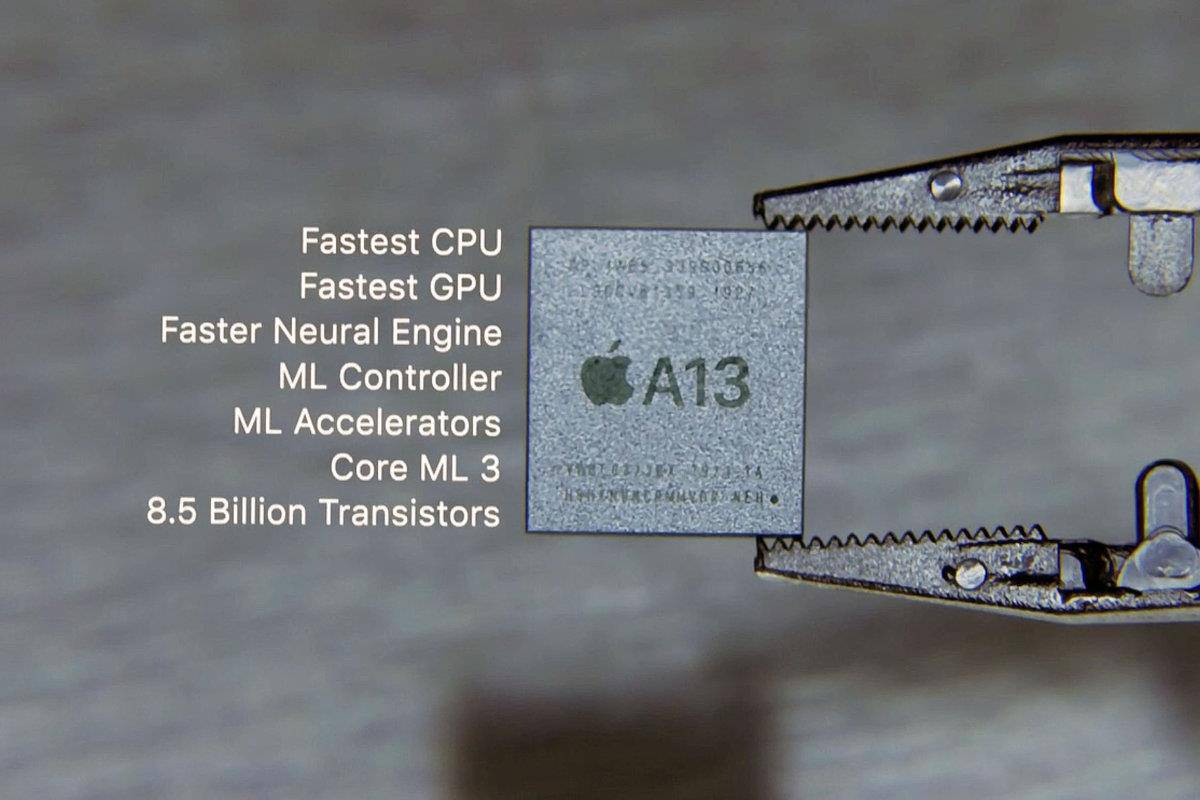
The Apple A13 Bionic, built on 7nm N7P technology (second-generation 7nm fabrication), features over 8.5 billion transistors. This combination allows for both high performance and power efficiency.
The chipset has a 6-core CPU based on ARMv8.4-A architecture. It includes two high-performance cores, called Lightning, running at 2.65 GHz, and four efficiency cores, named Thunder, optimized for power savings.
Compared to the A12 Bionic, the A13 Bionic offers a 20% increase in CPU performance while consuming 30% less power. The four efficiency cores are also 20% faster and 40% more power-efficient than their predecessors.
Graphics performance is another area of improvement. The A13 Bionic's GPU is 20% faster and 40% more power-efficient than the A12 Bionic, making it ideal for gaming and high-performance applications.
The A13 Bionic powers the iPhone 11, iPhone 11 Pro, and iPhone 11 Pro Max. It is also used in the iPhone SE (2020), providing flagship-level performance in a compact device.
8. Apple A12 Bionic, Apple A12X Bionic, Apple A12Z
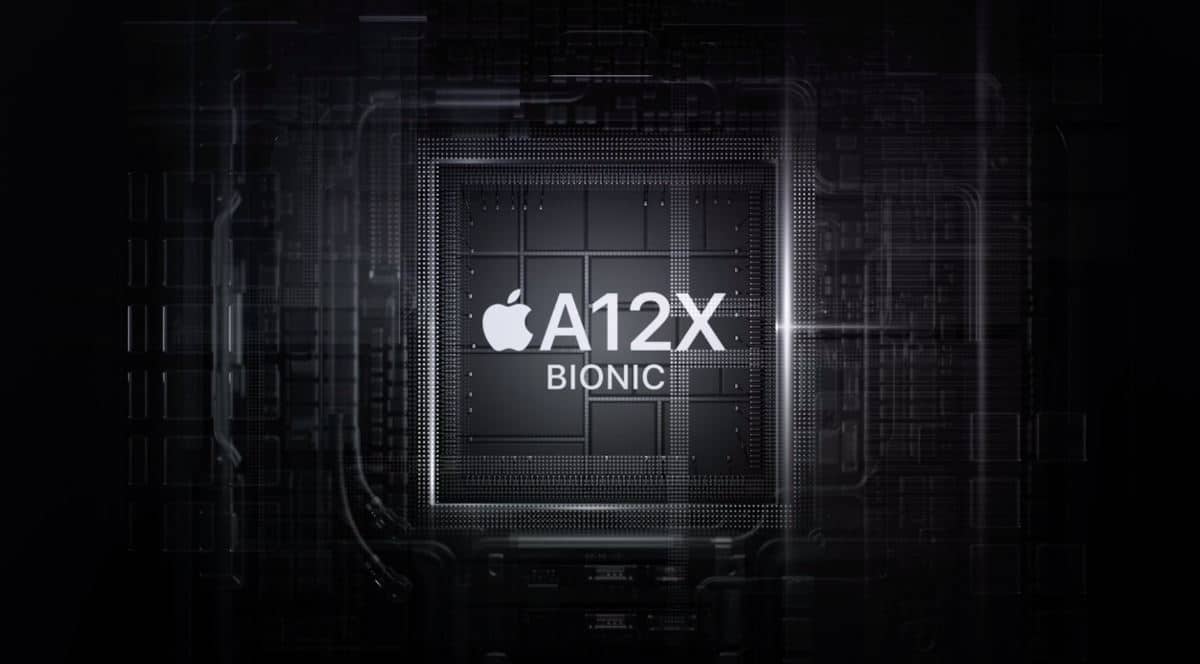
Apple continued using the Bionic branding with the A12 Bionic. Designed by Apple and manufactured by TSMC using the 7nm FinFET process, this chipset powers the iPhone XS, iPhone XS Max, and iPhone XR. It was introduced alongside these iPhones on September 12, 2018.
Apple claims the A12 Bionic offers a 15% faster high-performance CPU than the A11 Bionic, while its power-efficient cores provide 50% better energy efficiency than those in the previous generation.
9. Apple A11 Bionic
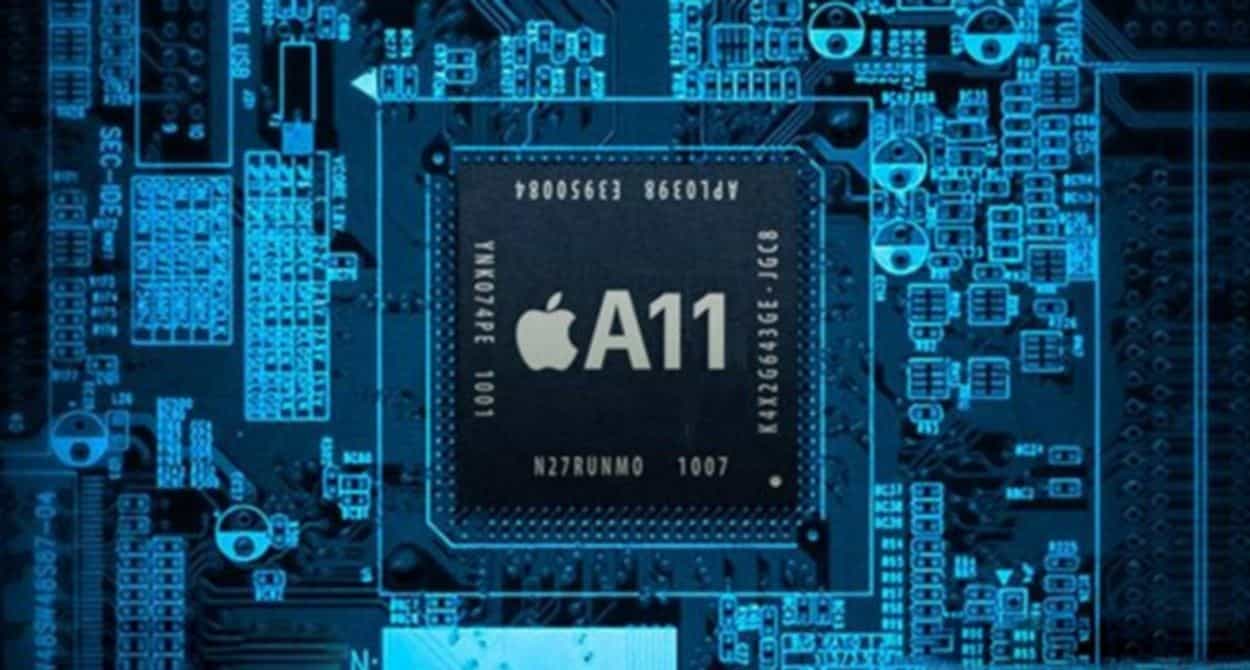
Apple introduced the A11 Bionic with a 64-bit ARM-based architecture. Like previous models, it was designed by Apple and produced by TSMC, but this time using 10nm FinFET technology. It was launched on September 12, 2017, alongside the iPhone 8, iPhone 8 Plus, and iPhone X.
The A11 Bionic features a 6-core CPU with a unique design: two high-performance cores (Monsoon) running at 2.39 GHz, and four efficiency cores (Mistral) optimized for lower power consumption.
According to Apple, the A11 Bionic delivers 40% better CPU performance and 50% improved graphics capabilities compared to the A9 Bionic.
10. Apple A10 Fusion and A10X Fusion
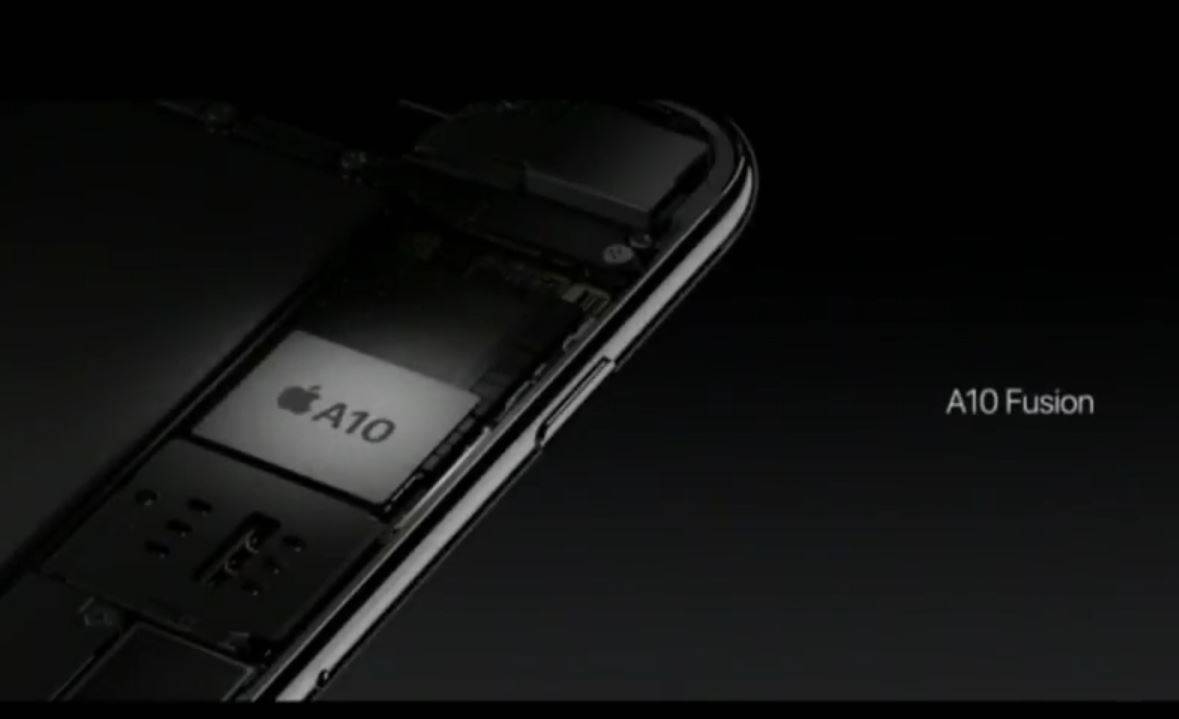
The A10 Fusion is a 64-bit ARM-based SoC, designed by Apple and manufactured by TSMC using the 16nm FinFET process. It features a quad-core CPU with two high-performance cores for demanding tasks and two power-efficient cores for basic operations.
Apple claims that the A10 Fusion CPU is 40% faster, and its GPU is 50% more powerful than the A9 Bionic. This chipset powers the iPhone 7 and iPhone 7 Plus, which were launched on September 7, 2016. It was later used in the 2018 iPad as well.
A higher-performance variant, the A10X Fusion, was designed specifically for iPads. It powers the 10.5-inch iPad Pro and 12.9-inch iPad Pro (2nd generation).
Built on 10nm FinFET technology by TSMC, the A10X Fusion delivers 30% faster CPU performance and 40% better GPU performance compared to the A9X.
These are some of the best Apple chipsets available today. Hopefully, this article provides useful insights for those planning to purchase an Apple device in the near future.
